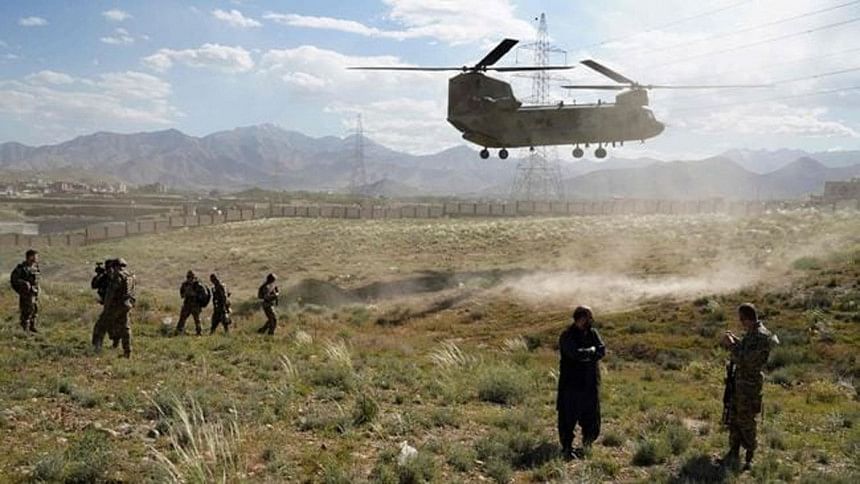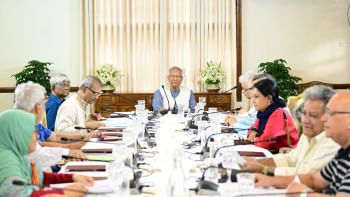Has Trump found a solution to America’s Afghan problem?

America's recent peace agreement with the Talibans in Doha makes many ponder whether it has lost the war. However, before coming to such a conclusion, we should revisit the aims of this decades-old bloody conflict.
According to President Bush Jr, its mission was "to disrupt the use of Afghanistan as a terrorist base of operations and to attack the military capability of the Taliban regime." But the Talibans are still a formidable foe, and terrorists have spread to far-flung countries. By signing the agreement with the Talibans, sidelining the elected government of Afghanistan, the US has only accepted its legitimacy, abandoning the mission President Bush stated at the outset.
One particular aspect of this war is unmissable; it's nearly impossible to plan and mobilise such a large-scale military mission thousands of miles away in less than a month.
What was the aim of the war then, and is the peace agreement just a change of tactic to achieve it? To find an answer, we must go back many years.
'The Geographical Pivot of History'—the Heartland Theory
In 1904, British geographer Halford Mackinder proposed a theory—which he called the "Heartland" theory—in a paper titled "The Geographical Pivot of History." The essence of this theory is that Eurasia is the global pivot point, and whoever controls the Eurasian continent—the "Heartland"—can exercise global dominance. Today, the Heartland consists of Russia, the former Soviet Republics of Central Asia, and the Caspian basin. Russia has long been the de facto controlling power of this region.
The new player in this game is China, as it's projecting its influence through land routes in Central Asia, Pakistan, and Afghanistan.
Soon after the collapse of the Soviet Union in 1991, the US adopted a policy of expanding in this region, made explicit in a Pentagon document in early 1992. It stated that the first objective of the US was to prevent any rival power dominating this region, and it would preclude the emergence of any potential future global competitor.
In February the same year, the USAID prepared a report titled "Mineral Resources in Afghanistan," providing a comprehensive picture of the vast amounts of oil, gas, rare earth elements, and other minerals. It made Afghanistan an integral part of America's Eurasia policy.
Dr Zbigniew Brzezinski, the US National Security Advisor from 1977 to 1981, contributed further to the Pentagon policy through his seminal work "The Grand Chessboard (1997)". In it, he said: "The most immediate task is to make certain that no state or combination of states gains the capacity to expel the United States from Eurasia or even to diminish significantly its decisive arbitrating role."
Securing Afghanistan was, therefore, crucial, and the 9/11 incident was a God-send opportunity.
By 2010, the Afghan war had been dragging on for a decade but made little discernable progress. The Talibans were steadily getting stronger. Al Qaeda was still present and had since spread to several other countries.
In June that year, in an apparent bid to buy more time for the war, the Pentagon reported the "discovery" of nearly USD 1 trillion in untapped mineral deposits in Afghanistan. But despite continued efforts until 2016, the situation didn't improve much. Afghanistan became a blaring case of American foreign policy failure.
'To the victor belong the spoils'
In January 2017, Donald Trump took over as America's 45th president. In the same month, he declared at the CIA headquarters: "To the victor belong the spoils." But picking up the spoils of the Afghan War was a dangerous and costly endeavor as most mine sites were still under Taliban control, and security remained ever elusive.
Trump, the businessman, was on the search for a cost-effective way to guard the mines and carry the ores to the ports.
'Prince' to the rescue
Remember Erik D Prince of the private security firm Blackwater International, that gained notoriety in Iraq? Prince is now in the Afghanistan arena, promoting a new idea that could enable the US to reduce its troops and, at the same time, ensure the security of the mine sites and transport of the minerals outside the country. How? By privatising the war.
Since the Blackwater saga in Iraq, Prince had moved on to set up Frontier Services Group Ltd (FSG) in Hong Kong. For Afghanistan, he has proposed a smaller active presence of US forces, combined with some 20,000 private contractors, supported by air through a fleet of contracted aircraft flown by joint teams of Afghans and contractors. Prince says—based on his previous experience in Iraq, UAE, and Pakistan—the plan won't cost tens of billions of dollars on a large number of troops but would be adequate to ensure security at the mine sites. Once the minerals are outside Afghanistan, it would pay off all the costs the Americans have incurred so far, several times over.
Trump may find Prince's idea too hard to resist.
The human cost
Meanwhile, the human cost of the war is rising, as a study by Brown University in October 2019 indicates. Crossfire, improvised explosive devices (IEDs), assassinations, bombings, night raids into houses of suspected insurgents, and American cluster bombs—all are killing civilians in disproportionate numbers. Poverty, violence, insecure infrastructure, malnutrition, poor sanitation, lack of access to healthcare, environmental degradation all are contributing to premature death. A rough estimate puts the total number of war deaths to 157,000 since 2001. Of this, more than 43,000 are civilians.
As I write this, President Donald Trump has imposed sanctions on the court officials who are investigating the alleged war crimes of US forces in Afghanistan. It could lead to a repeat of the chaos and anarchy of Iraq, and the resource curse of Congo, combined. The Doha agreement is an ominous sign that mercenaries may conduct the war, and Afghanistan will bleed for many more years.
Sayeed Ahmed is a consulting engineer with experience in infrastructure project management in South Asia.

 For all latest news, follow The Daily Star's Google News channel.
For all latest news, follow The Daily Star's Google News channel. 



Comments